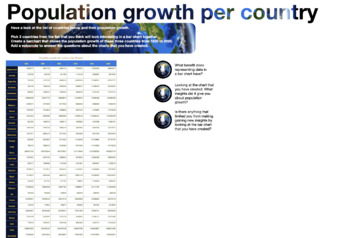Population Growth interactive Numbers workbook
- Zip
Description
In this interactive workbook students will learn how to create different kind of charts from data tables around the topic of world population growth.
First they will guess the total number of people living on earth and draw where in the world they are living. Secondly we look at adding columns to a table and adding a simple sum function to calculate the total number of people living on earth over a period of 120 years. This column we will then plot on a line graph.
This lesson also covers:
Bar charts and population growth per country
Pyramid charts and population pyramids
Line charts and demographic transition models
Each activity includes reflection questions where students add voicenotes to explain their graphs and what they can deduce from them.



